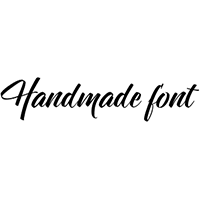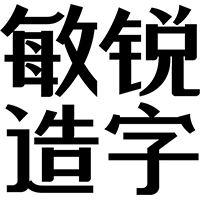Figuring Out Numerals

A support request made me realize that we don't really have an all-encompassing post to forward to users requesting information about figures. Figuring It Out: OSF, LF, and TF Explained, the very handy overview OpenType in Adobe Creative Suite – The Raiders of The Lost Glyphs Pt. 1. Still, there are gaps that warrant compiling and updating the information from these two posts. I want to make this as comprehensive as possible, so don't hesitate to point out any aspect that may be missing.
Back in the days when the character sets of digital fonts were still limited to 256 glyphs, there was only room for one numeral set per font. The most common were tabular lining figures, and one had to use separate fonts – Expert sets and / or Small Caps & Oldstyle Figures fonts – to have access to proportional oldstyle figures. However since the advent of OpenType and the implementation of Unicode, professional fonts now include up to six sets of numerals, and sometimes even more.

Vertical measurements in the anatomy of a typeface.
Typeface:Tiina Professional
Because the different types of numerals are defined by their dimensions, I would like to start with a brief refresher course. The illustration above shows the vertical measurements in the anatomy of a typeface, which will be used in all the illustrations in this post. The baseline is the imaginary line upon which the letters in a font appear to rest. Please take note that ascenders often extend above the cap height, and small caps are typically a little larger than the x-height.
For a complete overview of terminology related to digital type, please refer to the Typographer's Glossary.
Overview of the different figure styles

In professional OpenType fonts both lining figures (top row) and the oldstyle figures (bottom row) are available in tabular versions (left column) and proportional versions (right column).
Typeface:Tiina Professional
The two basic styles of numerals are the lining figures (top row) and the oldstyle figures (bottom row).
Lining figuresrest on the baseline and all have the same height, usually as high as the capital letters. Numbers in selected text are switched automatically to their lining forms when applying the All Caps feature.
Oldstyle figures– sometimes called hanging figures – have different heights. Their "body" corresponds to the x-height of the lowercase letters (0,1,2), with certain numbers descending below the baseline (3,4,5,7,9), and others extending above the x-height (6,8). The design of oldstyle figures sometimes differs from their lining counterparts.
In professional OpenType fonts both lining and oldstyle figures are available in tabular versions (left column) and proportional versions (right column).
Tabular figuresshare identical character widths, as shown by the red divider lines in the left column. Because they all take up the exact same amount of space, numerals in subsequent lines of numbers neatly line up in vertical columns. This is especially useful for tables, thus "tabular" figures. To compensate for its narrow shape, sometimes foot serifs are added to the figure 1 (see illustration below).
Proportional figuresare spaced according to their design; the spacing of the red divider lines varies. For instance, the space taken up by the figure 1 is narrow, and less wide than the space taken up by number 6. The design of proportional figures sometimes differs from their tabular counterparts.

The difference in spacing and design between proportional figures (left column) and tabular figures (right column).
Typeface:FF Sero
Beyond these two basic styles, each spaced in two different ways, there are two additional styles of smaller figures, primarily for use in mathematical and scientific applications.

Numerators and denominators (left) have a different vertical position than subscript and superscript figures (right).
Typeface:Tiina Professional
Although they may look identical, superscript & subscript figures (right) have a different vertical position than numerators & denominators (left). Because they are designed to be used in mathematics amongst others, these figure styles are usually tabular.
Superscript & subscript figuresare centred against respectively the top of the lining figures (the cap height) and the baseline.
Numerators & denominatorsare vertically positioned in relation to the solidus. The top of the numerator aligns with the top of the lining figures (the cap height), while the denominator rests on the baseline.

Small caps figures are lining figures exactly as tall as the small caps in a typeface.
Typeface:Tiina Professional
Small caps figures, the last figure style, are lining figures exactly as tall as the small caps in a typeface (a little taller than the x-height).
The figure style you choose ought to be appropriate for the type of setting, with readability in mind. But which style is best for which purpose?
Tabular Lining Figures
 Tabular lining figures line up neatly both horizontally and in vertical columns.
Tabular lining figures line up neatly both horizontally and in vertical columns.
Typeface:Panno Text
Tabular lining figures are as tall as the capitals and have fixed widths. This makes them line up neatly both horizontally and in vertical columns. They are ideal for any tabular numeral material, ranging from simple number work and ordered lists over forms and prices in menus to complex financial tables in business reports – any situation where alignment is crucial.
Avoid using tabular lining figures in mixed case or lowercase setting as they stand out too much and distract the reader, or in uppercase display setting or headlines as the fixed widths produce irregular spacing.
Proportional Oldstyle Figures

The shapes and spacing of proportional oldstyle figures makes them perfectly harmonise with the surrounding text, preventing the numbers from standing out too much and distracting the reader. In this illustration superscript figures were used for the footnote indications.
Typeface:FF Spinoza
The "body" of proportional oldstyle figures corresponds with the x-height of the lowercase, with the upwards and downwards extenders mimicking the ascenders and descenders of the lowercase letters respectively. The proportional spacing gives the numbers an even colour which matches the text colour. These two characteristics makes proportional oldstyle figures perfectly harmonise with the surrounding text, preventing the numbers from standing out too much and distracting the reader. They are ideal for use in body copy in magazines, newspapers, books, and more generally for any type of running text in mixed case setting.
Avoid using proportional oldstyle figures in uppercase setting as they look too small, or in tables as the numbers won't align horizontally nor line up in vertical columns.
Proportional Lining Figures

Proportional lining figures are to be used in uppercase setting, for example in headlines.
Body copy from Scott Creney's terrific Nirvana's Nevermind, 20 Years Later on Collapse Board.
Typeface:ARS Maquette
Proportional lining figures are also as tall as the capitals, but the proportional spacing produces an even colour which matches the text colour. They are ideal for use in uppercase display setting and headlines, as well as in abbreviations that mix capitals and numerals, like model numbers and so on.
Avoid using proportional lining figures in mixed case or lowercase setting as they stand out too much and distract the reader, or in tables as the numbers won't line up in vertical columns.
Tabular Oldstyle Figures

Because they are monospaced, tabular oldstyle figures are ideal for setting phone and fax numbers on stationery, page numbers in tables of contents, and so on.
Typeface:FF Tundra
Tabular oldstyle figures also mimic the x-height, ascenders and descenders of the lowercase letters, but their fixed widths make them line up neatly in vertical columns. They are ideal for phone numbers on business cards and letterheads, numbered lists and tables of contents in books and catalogues, and in any situation where tabular material needs a little more refinement, a little more class.
Avoid using tabular oldstyle figures in uppercase setting as they look too small, or in running text as the fixed widths produce irregular spacing.
Small Cap Figures

Comparing oldstyle figures for mixed case setting, lining figures for all caps setting, and small cap figures for small caps setting.
Typeface:Fayon
Small cap figures are less common, yet are very useful in sophisticated typography and even indispensable in specific cases. Because they are exactly as tall as the small caps – which typically are a little taller than the x-height – numbers will nicely blend in in text set in small caps. Any numbers in selected text will be automatically converted to their small cap forms when applying the Small Caps or All Small Caps OpenType features.
If small cap figures are missing, always use oldstyle figures instead. Avoid using lining figures as they are too tall, which makes them stand out too much and distract the reader.
Superscript & Subscript

Examples of superscript and subscript: from left to right the formula for glucose, the atomic isotope uranium, and y raised to the fourth power.
Typeface:Fayon
Superscript and subscript are smaller in size and centred on respectively the cap line and the baseline. Perhaps the most familiar example of subscript figures is in chemical formulas, but they can also be used in other scientific settings and mathematics, as do superscript figures. Superscript figures are commonly used to indicate numbered footnotes.
Numerator & Denominator

Examples of numerators and denominators in fractions in a mathematical equation.
Typeface:Fayon
Numerators and denominators are a special kind of superscript and subscript figures. They are sized and positioned to be used in fractions. The top of the numerators align with the top of the solidus – which corresponds with the cap height and the top of the lining figures –, while the denominators align with the bottom of the solidus which rests on the baseline. Applying the Numerator / Denominator OpenType feature on numbers separated by a slash will not only automatically convert the figure(s) before the slash into numerators and the figure(s) after the slash into denominators, but also the slash into a solidus.
How to access the specific figure sets
As the different figure sets are built-in as OpenType features, certain (older) operating systems and applications that don't support these features will only be able to access the default figures. These default figures differ from foundry to foundry, from type designer to type designer. Some stick to the tabular lining figures that were the original default in the early PostScript days, others prefer the typographically sound proportional oldstyle variants. But you're stuck with their choice.

The OpenType window inAdobe Illustrator CS4.

The OpenType fold-out menu in the Character window inAdobe InDesign CS4.
In OpenType fonts the different figure sets can be accessed in different ways.
The first one is to activate the corresponding OpenType features in the OpenType window in Adobe Illustrator, or in the OpenType fold-out menu in the Character window in Adobe InDesign. For the four basic styles – lining and oldstyle figures, both in tabular and proportional variants – this can be done by applying the desired style to whole blocks of text, because it doesn't influence the appearance of any of the other characters. There is no need to select individual numbers and apply the styles to them separately. An even better approach is to include the appropriate figure styles in style sheets, also known as the Paragraph Styles and Character Styles in Adobe InDesign and Illustrator.
As they could affect other characters it is not a good idea to apply the Superscript / Subscript and Numerator / Denominator OpenType features to whole blocks of text or style sheets on a paragraph level, only on a character level. Remember to never use the Superscript and Subscript functions in the Character window, as these produce artificially scaled and repositioned figures. See OpenType in Adobe Creative Suite – The Raiders of The Lost Glyphs Pt. 1 for more information.
Small cap figures are a special case. Because they are specifically designed to only be used with small caps, they should always be applied in context, together with the surrounding text or incorporated in a style sheet.

The Character window with fold-out menu inAdobe Illustrator CS4.

The Character window with fold-out menu inAdobe InDesign CS4.
A different way to influence the appearance of the figures is by applying letter-oriented OpenType features to text. Selecting All Caps will override the formatting of any numbers and convert them to their lining variants. The tabular or proportional qualities of the figures are respected. Similarly, applying Small Caps or All Small Caps will override the formatting of any numbers and convert them to their small cap variants.

Selecting alternate glyphs for the numeral five in the Glyphs window.
Typeface:Fayon
The final option to select different figures sets is through the Glyphs window. Any glyph with alternates has a little fly-out arrow at the bottom right; clicking the glyph area and holding down the mouse button reveals alternates present in a one-to-one substitution feature. Thus clicking a figure will offer all the alternate forms for selection. As this needs to be done one figure at the time, this is a time-consuming procedure and thus not advisable.
Why tabular figures sometimes won't line up in vertical columns
Applications like Adobe InDesign, Illustrator and Photoshop allow you to override the spacing and kerning of fonts. The default setting Metrics (Auto in Adobe Illustrator) in the Character menu uses the spacing and kerning as specified by the type designer or font engineer. This makes tabular figures all occupy the exact same width, as they are intended to do.
Another setting called Optical analyses the actual shapes of the characters and modifies the kerning accordingly, overriding both the spacing and the built-in kerning tables of the fonts in the process. Although Optical kerning is advertised to improve the setting of headlines and display type, the result can be quite arbitrary at times. The mathematical analysis of character shapes seldom measures up to the judgement of a trained eye. However it can be useful when combining letters of different fonts, or when the built-in kerning of the font is to be desired.

When tabular figures don't line up in vertical columns, check if Kerning is set to Metrics (Auto in Adobe Illustrator) and not Optical.
Optical kerning will prevent tabular figures from lining up in vertical columns, as both spacing and (lack of) kerning are ignored, and the figures are spaced according to their character shapes. Always make sure to check if Kerning is set to Metrics (Auto in Adobe Illustrator). When in doubt and as a measure of last resort, set kerning to 0 for tabular figures.
Header image:Woodtype numerals by Youri Penders, DING Creative Studio

































 闽公网安备35010202000240号
闽公网安备35010202000240号